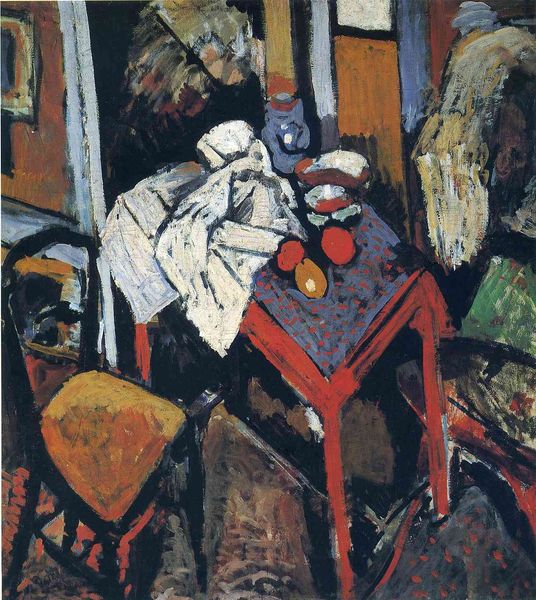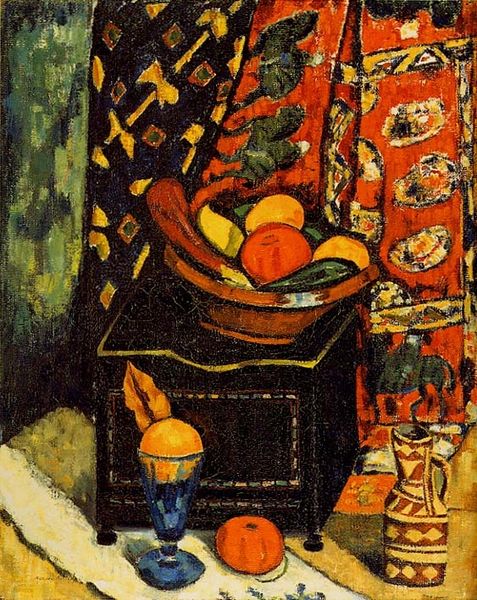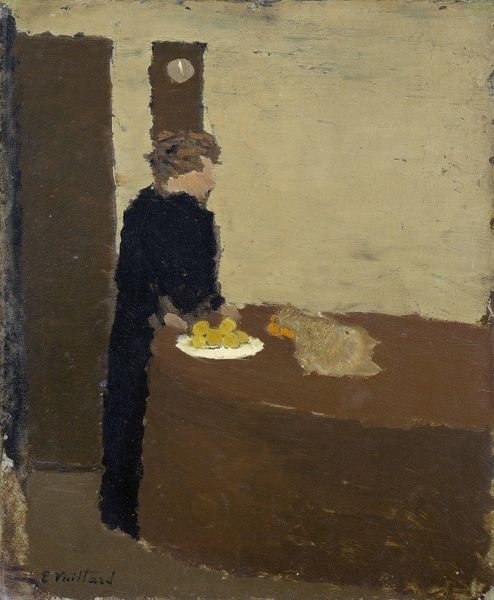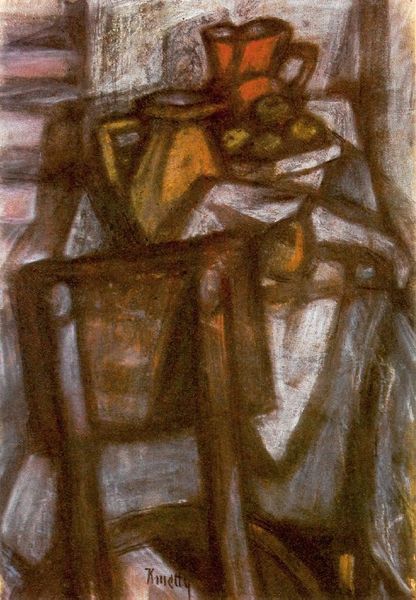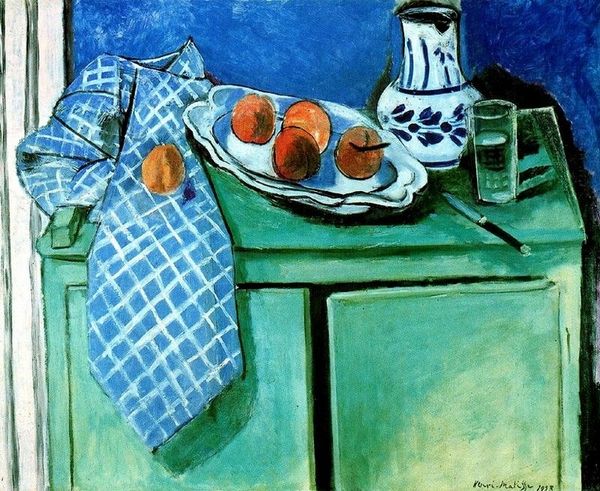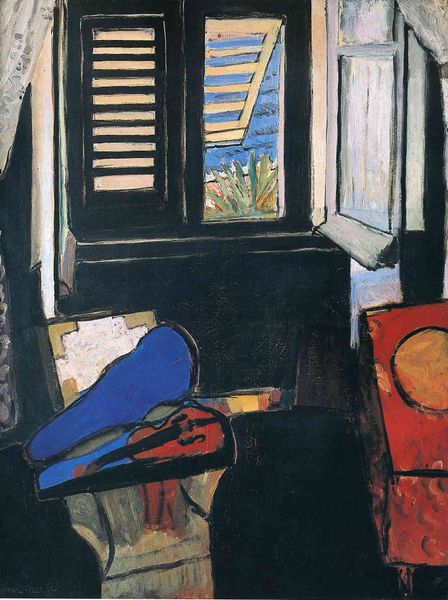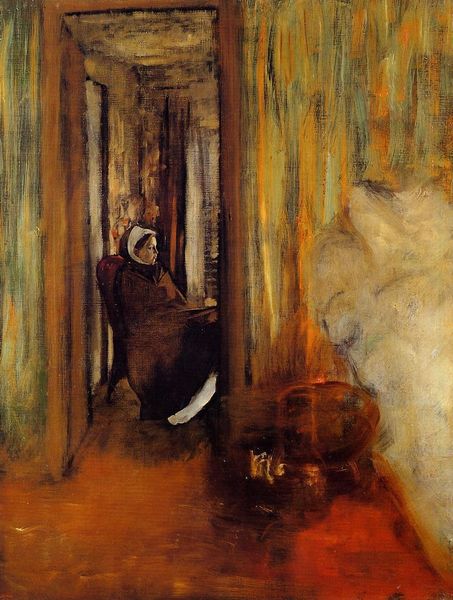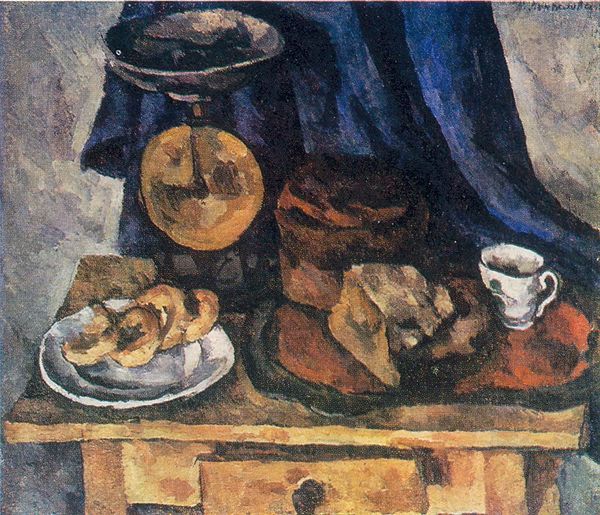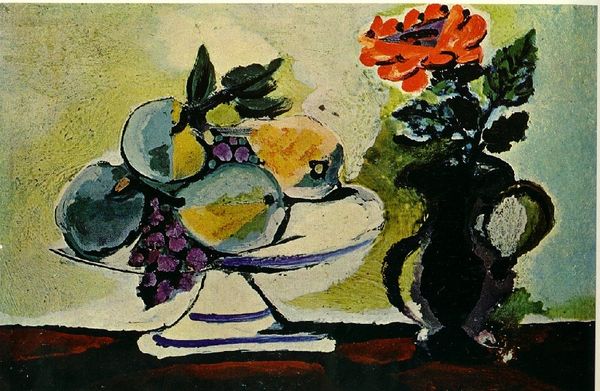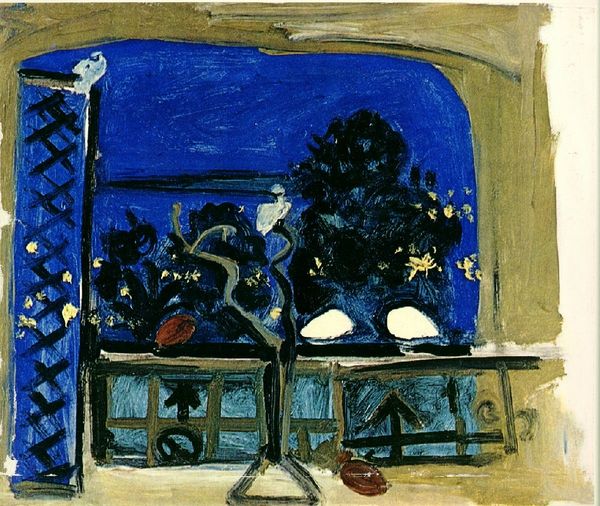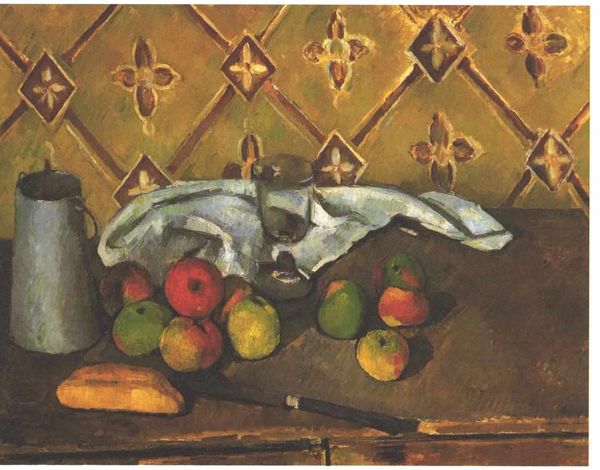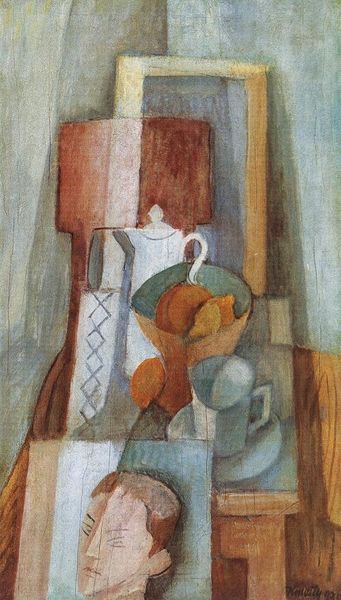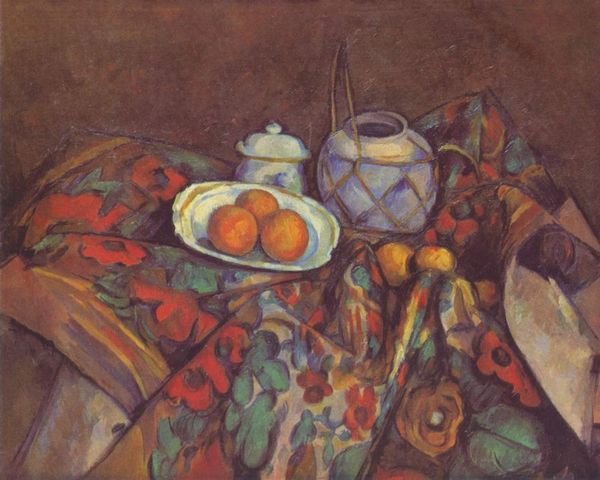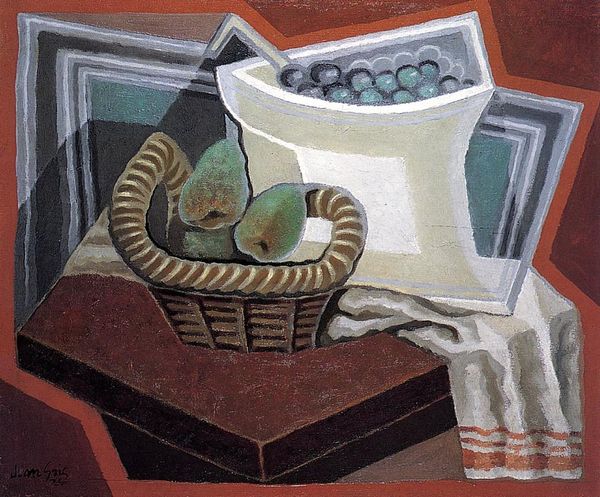
Copyright: Public domain US
Editor: Here we have Henri Matisse's "The Lorrain Chair" painted in 1919, an oil on canvas. I am immediately drawn to the rather unorthodox composition, the chair looks a little lopsided, as does the backdrop, what sense do you make of this piece? Curator: Well, the first thing that strikes me is how Matisse uses common objects to evoke larger concepts of domesticity and artistic creation. Have you noticed how the wallpaper echoes the shapes found within the chair itself, or even the curves of the fruit? Editor: Yes! There’s a pattern language between the background and the foreground, creating a dream-like echo of these shapes in our memory. Is there an art historical precedent here? Curator: Consider how still-life paintings often symbolize abundance or mortality. But what does it mean when Matisse places three seemingly ordinary peaches on a carved, decorative chair? The chair may signal a certain type of lifestyle. Is this bourgeois comfort, disrupted through unconventional forms and painting techniques? Or is Matisse referencing another chair and history, using it as a throne? Editor: That’s fascinating; it could be mocking that lifestyle, perhaps reflecting societal changes after the First World War, a sense of disillusionment? Curator: Precisely! The tilted perspective and flattening of space – very characteristic of modernism – disrupt any traditional reading. Think about how such objects in a painting can signal much bigger conversations on the shifts happening within a society. What else does this artwork evoke for you? Editor: Now, looking at the chair's symbolism of domesticity mixed with post-war sentimentality, I understand how this composition is not as unorthodox as it seems. I’m very drawn to Matisse's use of shape, surface and colour.
Comments
No comments
Be the first to comment and join the conversation on the ultimate creative platform.
